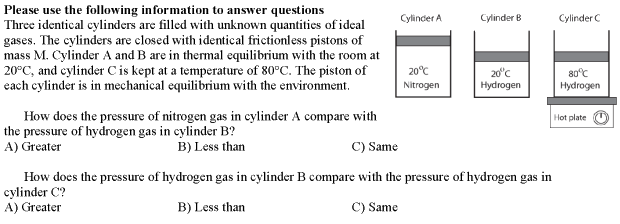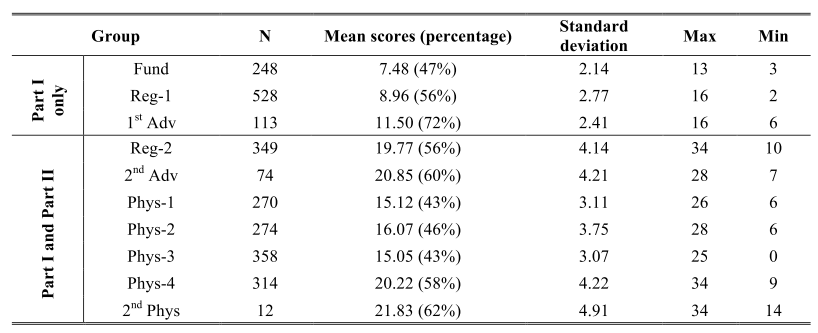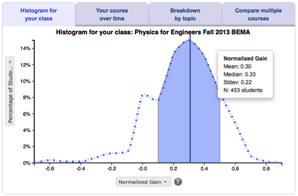Developed by Pornrat Wattanakasiwich, Preeda Taleab, Manjula Devi Sharma, and Ian D. Johnston
| Purpose | To understand students’ conceptual understanding of heat and temperature, the ideal gas law, the first law of thermodynamics and processes. |
|---|---|
| Format | Multiple-choice |
| Duration | 35 min |
| Focus | Thermal / Statistical Content knowledge (temperature, heat transfer, ideal gas law, first law of thermodynamics, phase change, thermal properties of materials) |
| Level | Intermediate, Intro college |
Sample questions from the TCS:


TCS Implementation and Troubleshooting Guide
Everything you need to know about implementing the TCS in your class.
Login or register to download the implementation guide.
more details
This is the second highest level of research validation, corresponding to at least 5 of the validation categories below.
Research Validation Summary
Based on Research Into:
- Student thinking
Studied Using:
- Student interviews
- Expert review
- Appropriate statistical analysis
Research Conducted:
- At multiple institutions
- By multiple research groups
- Peer-reviewed publication
The multiple-choice questions on the TCS were developed using results from previous studies on students’ understanding of thermodynamics topics and then these questions were translated into Thai and the translation was verifies by experts. The content of test questions were reviewed by experts and the test was given to graduate students to make sure the questions were easy to understand. The test was revised and given to Thai students in introductory physics courses as well as those in an upper-division thermodynamics course. The test was then divided into two parts and appropriate parts were given to introductory and upper-division students in Australia. Appropriate statistical analyses of reliability, difficulty and discrimination were conducted and reasonable values found for each. The TCS has been used with over 2000 students at two institutions. There is one peer-reviewed publication presenting TCS data.
References
- P. Wattanakasiwich, P. Taleab, M. Sharma, and I. Johnston, Development and Implementation of a Conceptual Survey in Thermodynamics, Int. J. Innov. Sci. Math. Educ. 21 (1), 29 (2013).
PhysPort provides translations of assessments as a service to our users, but does not endorse the accuracy or validity of translations. Assessments validated for one language and culture may not be valid for other languages and cultures.
| Language | Translator(s) | |
|---|---|---|
| Chinese | Wei Fang |  |
| Thai |  |
If you know of a translation that we don't have yet, or if you would like to translate this assessment, please contact us!
Score the TCS on the PhysPort Data Explorer
With one click, you get a comprehensive analysis of your results. You can:
- Examine your most recent results
- Chart your progress over time
- Breakdown any assessment by question or cluster
- Compare between courses
| Typical Results |
|---|
Typical results for TCS from Wattanakasiwich et. al 2013. Fund = Australian 1st yr. undergrads who did not studied physics in high school. Reg-1 = Australian 1st yr. undergrads who mostly studied physics in high school. 1st Adv = Australian 1st yr. honors undergrads who studied physics in high school. Reg-2 = Australian 1st yr. undergrads who are taking the first–year reg. physics course. 2nd Adv = Australian 2nd yr. university physics students. Phys-1,2,3, and 4 = Thai 1st yr. undergrads. majoring in science who studied physics in high school. 2nd Phys = Thai 2nd yr. undergrads. physics majors in second-year thermodynamics class.
|
The latest version of the TCS, released in 2011, is version 2. Version 2 consists of two parts: Part I covers temperature and heat transfer, and ideal gas law. Part II covers the first law of thermodynamics and processes. In version 1, these two parts were mixed together. They were separated, according to the authors, "to make the survey match with Australian high school curriculum."






